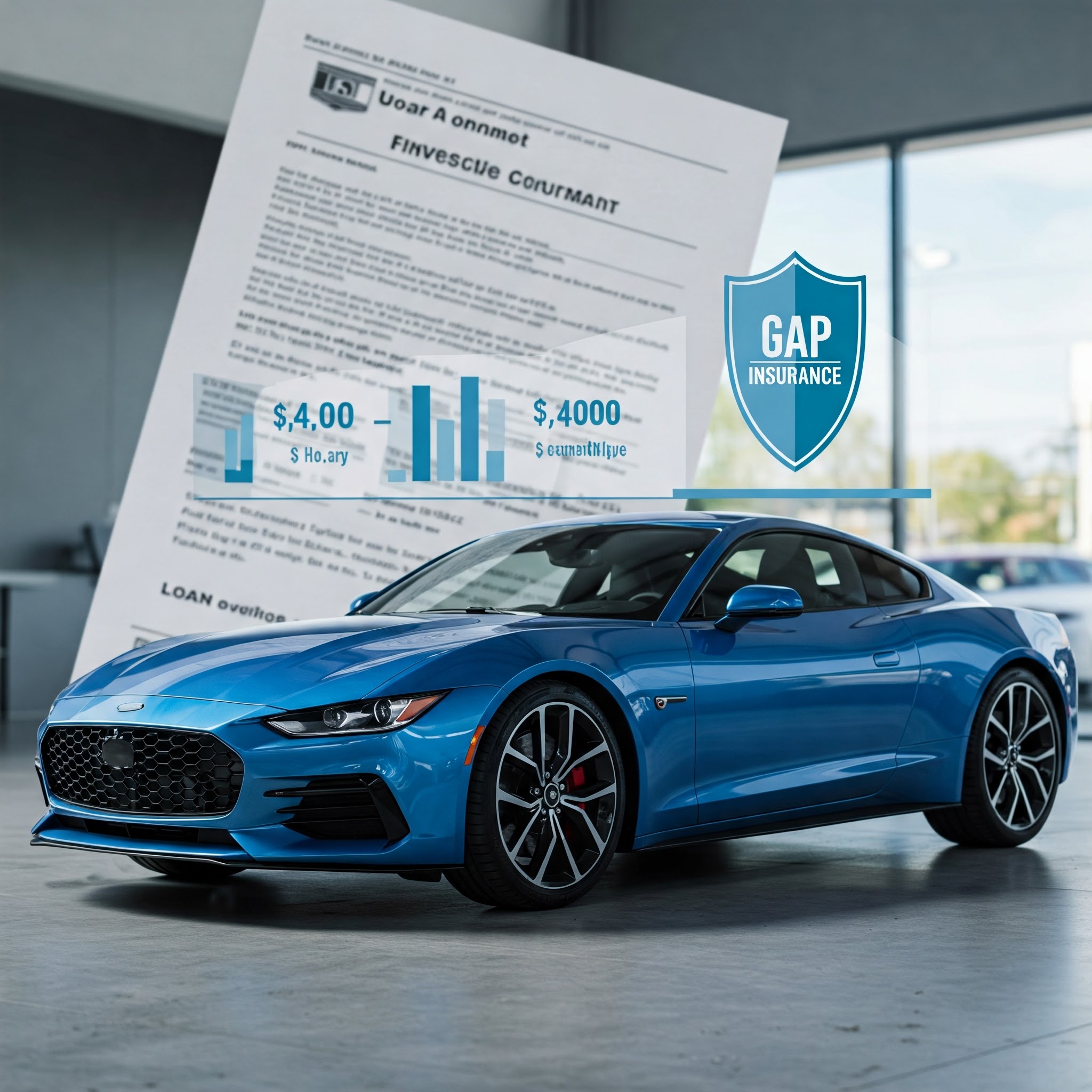Introduction
Imagine you just bought your dream car, and a few months later, an accident totals it. The insurance company agrees to pay, but there’s a catch—they will only cover the car’s current market value, which is now lower than what you owe on your loan. This is where gap insurance steps in.
Gap insurance is crucial for anyone financing or leasing a car. It prevents you from paying out of pocket for a loan on a car you no longer have. In this article, we’ll break down what gap insurance is, why it’s important, its benefits, how to get it, common problems, and future trends in car insurance.
Understanding the Topic
What is Gap Insurance?
Gap insurance, short for Guaranteed Asset Protection insurance, covers the difference between your car’s actual cash value (ACV) and the amount you still owe on your loan or lease.
Why is It Important?
Cars depreciate quickly. According to industry experts, a new car loses about 20% of its value in the first year and up to 60% in five years. If you finance your car with a low down payment, your loan amount may be higher than the car’s value for a while. If your car is totaled or stolen, your insurance will only pay the current market value, leaving you responsible for the remaining loan balance. Gap insurance fills this gap.
Real-World Example
Suppose you buy a car for $30,000 with a loan. A year later, it’s worth $24,000, but you still owe $28,000. If your car is totaled, your standard insurance will pay $24,000, leaving you to cover the remaining $4,000. With gap insurance, that $4,000 is covered.
Key Benefits / Advantages
1. Financial Protection
Gap insurance ensures you don’t have to pay thousands out of pocket if your car is totaled or stolen.
2. Peace of Mind
Knowing that you’re protected from unexpected financial burdens lets you drive with confidence.
3. Helps with Low Down Payments
If you financed your car with a small or no down payment, gap insurance is essential because it takes time for your loan to match your car’s value.
4. Affordable Coverage
Gap insurance is relatively inexpensive. It typically costs $20-$40 per year when added to an auto policy.
5. Required for Some Leases
Many lease agreements require gap insurance to ensure full coverage in case of total loss.
Step-by-Step Guide / How-To Get Gap Insurance
Step 1: Check If You Need It
- Are you financing or leasing a new car?
- Is your loan amount higher than your car’s current value?
- Did you put less than 20% down on your car?
Step 2: Compare Options
- Dealer: Many dealerships offer gap insurance, but it may be more expensive.
- Auto Insurance Provider: Adding it to your policy is often cheaper than buying it separately.
- Standalone Providers: Some companies specialize in gap insurance.
Step 3: Understand Coverage Limits
Read the fine print to ensure the policy covers the full difference between your loan balance and ACV.
Step 4: Purchase the Policy
Once you find the best option, purchase the coverage before driving off the lot.
Step 5: Monitor Your Loan Balance
As your loan decreases and aligns with your car’s value, you may no longer need gap insurance.
Common Problems & Solutions
1. Overpaying for Gap Insurance
Solution: Compare quotes from multiple providers to get the best price.
2. Assuming It’s Included in Standard Insurance
Solution: Always check your policy. Gap insurance is an add-on, not part of standard coverage.
3. Canceling It Too Late or Too Soon
Solution: Keep gap insurance until your loan amount is lower than the car’s market value.
Future Trends / What’s Next?
1. Increasing Popularity
As more people finance vehicles with small down payments, gap insurance is becoming more common.
2. Digital Insurance Solutions
More companies are offering digital policies with easy online management.
3. Bundled Coverage Options
Insurers are offering bundles that include gap insurance, making it more affordable.
4. EV-Specific Gap Insurance
With the rise of electric vehicles, new gap insurance policies tailored to EV depreciation trends are emerging.
Conclusion & Final Thoughts
Gap insurance is a smart investment if you’re financing or leasing a car. It ensures you’re not left with a hefty loan balance if your car is totaled or stolen. While it’s optional, it provides peace of mind and financial security. Before purchasing, compare options and understand your coverage needs.
Call to Action
Do you have gap insurance? Have you ever needed it? Share your experiences in the comments below!
FAQs About Gap Insurance
1. What is gap insurance and why is it important?
Gap insurance covers the difference between what you owe on your car loan and the car’s actual cash value if it’s totaled or stolen. It helps prevent financial loss.
2. Who needs gap insurance?
Gap insurance is ideal for people who have a loan or lease, made a small down payment, or purchased a car that depreciates quickly.
3. How do I purchase gap insurance?
You can buy gap insurance through your car dealership, auto insurance provider, or even some financial institutions. Comparing prices is recommended.
4. How long should I keep gap insurance?
You should keep gap insurance until your loan balance is lower than your car’s market value, which typically takes a few years.
5. Does gap insurance cover mechanical issues or maintenance costs?
No, gap insurance only covers financial gaps in case of a total loss. It does not cover repairs, breakdowns, or maintenance.
